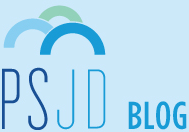The ABA’s Steve Grumm Breaks Down New York’s New Pro Bono Scholars Program
During last week’s annual State of the Judiciary address, New York Chief Judge Jonathan Lippman announced the new voluntary Pro Bono Scholars Program. This new initiative would allow 3Ls to study and sit for the February bar exam and spend the rest of their final year of law school completing pro bono work with an academic component.
Steve Grumm, friend of NALP and director of the ABA Resource Center for Access to Justice Initiatives, recently posted a few initial thoughts and reactions on the Program for the ABA’s Access to Justice blog:
-
How are we defining “pro bono”? Clearly academic credit is not a barrier b/c it’s a part of the Program. How about paid/stipended placements? Since the Program is connected with the 50-hour Rule, maybe the Program will use the 50-hour Rule’s broad definition of pro bono. [EDIT: a law school administrator friend weighed in: “The definition will need to comply with the requirements of participating law schools’ clinical/externship/academic programs. So it is not clear that pro bono work for which law students are paid will be allowed because the law schools will not be allowed to grant academic credit for paid pro bono work (even though certain paid pro bono work can count towards the 50-hour bar admission rule).”]
-
Can/will law schools reduce tuition on 3L spring semester?
-
Could a student participate in the Program without sitting for the Feb. bar exam?
-
To whom do 2Ls apply to participate in the Program? Their school, NY Board of Law examiners, NY courts? My guess based on the Chief’s announcement is that the schools will administer Program participation.
-
When will the Program roll out? Presumably this depends on the pace of the Advisory Committee and Task Force work, and the time law schools will need to create administrative structures.
To read the full blog post, including Chief Judge Lippman’s full address, head over to the ABA Access to Justice blog.

